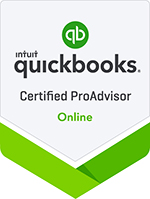Juggling Appreciated Assets and Bequests
During your lifetime, donating appreciated assets to charity can make sense. As long as you have held those assets for more than one year, you’ll get a deduction for the assets’ current value. The paper gain will avoid income tax.
Example 1: Ava Fitzgerald wants to donate $10,000 to her favorite charity this year. Instead of writing a check, Ava donates $10,000 of stock that she bought years ago for $4,000. Ava receives a $10,000 tax deduction for the donation and the $6,000 gain is never taxed. At the same time, Ava leaves her traditional IRA untouched, for ongoing tax deferral
Reversing course: When Ava prepares her estate plan, she decides to switch tactics. Ava intends to make a much larger bequest to her favorite charity, but she will not use appreciated assets for this donation from her estate. Instead, she will make this large bequest from her traditional IRA. Why the change? Consider the following scenario, which would have been the case without a switch.
Example 2: At Ava’s death, her only assets are a $100,000 traditional IRA and $100,000 in appreciated stocks. She leaves her traditional IRA to her son Brad and her $100,000 of appreciated assets to charity.
After Brad inherits the traditional IRA, he will have to pay income tax on all distributions from that IRA. If his effective income tax rate is 40%, Brad’s net inheritance will be only $60,000 (60% of $100,000) after tax.
Instead, Ava could make the switch mentioned previously, leaving her $100,000 traditional IRA to charity and the $100,000 of appreciated assets to Brad. The tax-exempt charity would not be affected because it can withdraw all the money from Ava’s IRA and not owe any income tax.
Brad, on the other hand, would be much better off inheriting the appreciated assets. Under current law, those assets would get a basis step-up to fair market value on the date of Ava’s death. Brad could sell those assets for $100,000 and owe no tax.



